Bookbinding - Showcase and advanced things
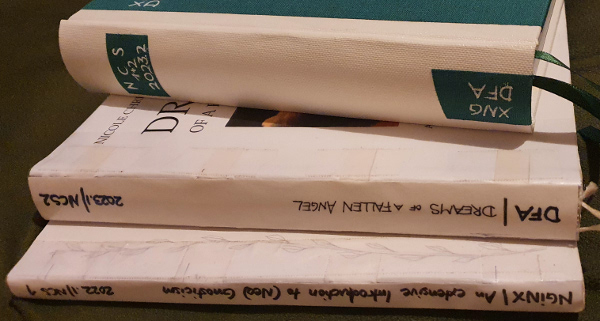
So, I'm feeling like this is a good point to expand a little on the simple "tutorial" of sorts - and go a bit deeper into the matter.
Obviously, my topmost concern - and it is a bit of a concern to me after all - is to enable a more sophisticated backbone to the existence and distribution of my books. However - outside of simply printing the raw PDF and stuffing it into a folder, which sure is valid, things do get ... uhm ... specific.
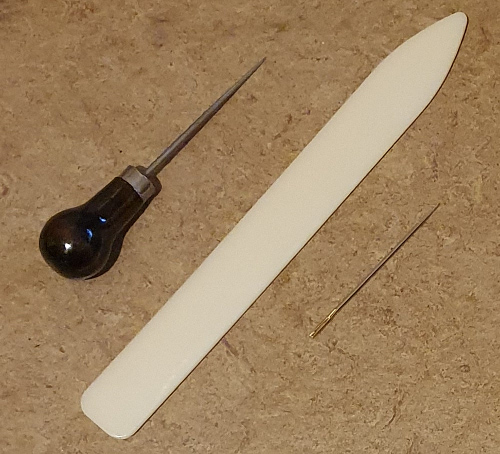
To take it as simple as possible - these are THE essential tools one could technically do without, where the thing to the left (awl) is certainly the first thing anyone would want to have. The one in the center (folding bone) is certainly practical to have. As are, generally speaking: All tools. Tools are generally there to make certain or specific tasks easier. Ever so often the shapes of these tools are more or less random; And one has to figure out for themselves, essentially, how to use it to which end.
For the purposes of "this" - there are two sides to the story: With glue/paste and without. So, without glue, this:

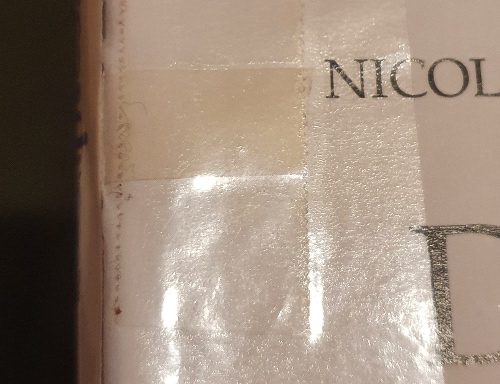
Thereafter, for the "final touch", some thin carton is glued to the inside of the front and pack page. In this example a glue stick has been used. And there sure is space for improvement.
Glue/Paste
Being not an expert, but kindof sortof just an apprentice, I don't know about all the in's and out's of this subject, but the matter of glues and most importantly: glue handling is the real crux of this craft. In my experience there are two glues that are used all the times; And anything outside of that is for special cases.Glue, in bookbinding, shockingly enough is used for glueing things together, but also for structure.
So, for simplicity let's say that there are two types of glue. I suppose it's a brand thing, but there is Planatol BB and Planatol 37.
The former is generally used for all sorts of things, being primarily a 'glue', and the latter is generally used to add stability, especially to the rounding of a book. As in: Simply adding a sturdy, elastic type of substance to the overall composition of the book.
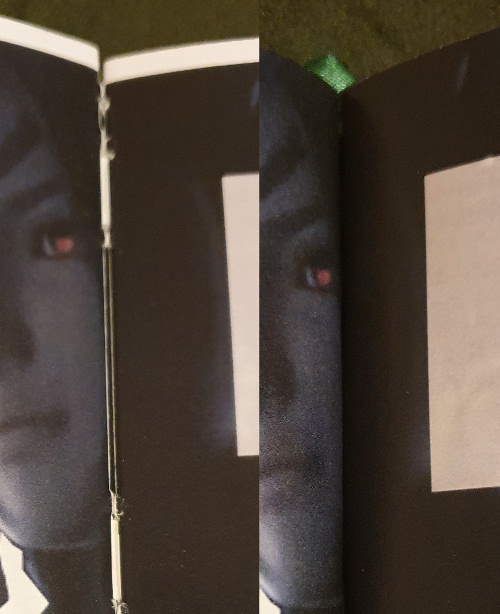
Hereby, first undiluted BB is pasted onto the back (after being squeezed into a press). That will make it seep into the wedges between the individual ... quires ... but will also add stability to the whole. When dry, the back is warmed up, making the glue more elastic, and then is rounded, put into a press so it will maintain the rounded shape, and then the 37 is applied once or twice.
The general purpose of this is in my understanding to offset the "joints" of the "quires" so the whole block is more flat.
Handling is important because you here and there need full coverage of a surface, but you don't want things to spill over:

The more diluted a glue is, the more water is in it. The more water is in it, the easier it is to spread it onto a surface - and also less of it as one might not want to have a Carl's Junior-esque experience out of the process. And this stuff is really strong glue. Even when diluted to the thinness of water it is still easily more powerful than conventional glue you'd let your kids have in their inventory. BUUUUT ...
The way glue dries can be imagined as matter radiates heat. Except that the glue radiates water particles. And as the water particles leave the glue, it dries. That is one reason why bookbinders are adamant about putting everything they do into presses and stacks of stuff - while at occasion also using paper and foil. The pressing will make sure that the material maintains a flat shape - paper will soak up moistness and foil will prevent it from going any further.
So will undiluted glue (BB and 37) dry really fast. Enough so that at times one has to hurry. That is especially relevant for the hard covers.
Hardcovers
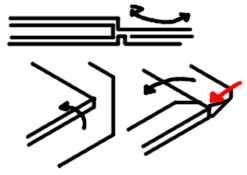
What one also needs to pay attention to is the running direction - as material glued together against their running directions will lead to wavy nonsense ... I've heard. Haven't had the opportunity to put it to the test yet.
I see the biggest problem with cutting the material, but ... yea. Make of this what you will.
